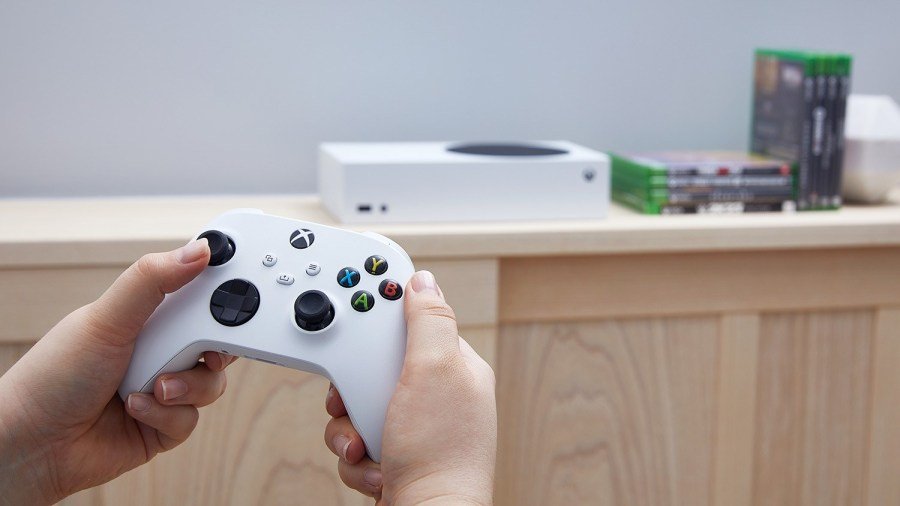## Your Wallet Feels the Heat: Microsoft Raises Xbox Prices Amidst Global Trade Tensions
Hold onto your controllers, gamers! The price of your next Xbox adventure just went up. Microsoft, the gaming giant behind Xbox, has announced a price hike for its consoles, games, and accessories, citing global trade war concerns as a primary factor.

Gamers React: Navigating the New Price Landscape
Microsoft’s recent announcement of price hikes for Xbox consoles, games, and accessories has sent ripples through the gaming community. Gamers are grappling with the implications of these changes, debating their impact on the industry and exploring potential alternatives.
Implication for Casual and Enthusiast Gamers
For casual gamers who primarily play on weekends or occasionally, the price increases could significantly impact their gaming budget.
A $100 increase for the Xbox Series X, while substantial, might not deter die-hard enthusiasts who prioritize the latest technology and immersive gaming experiences. However, the price point could push casual gamers towards more affordable alternatives, potentially impacting Microsoft’s market share in the casual segment.
Potential Impact on Game Sales and Industry Trends
The price hike for first-party games, from $69.99 to $79.99, could influence purchasing decisions, particularly for consumers who are already budget-conscious.
Gamestanza analysts speculate that this might lead to a decrease in game sales, especially for titles that are not considered blockbuster hits. This could drive publishers to explore other revenue models, such as subscription services or in-game microtransactions, to compensate for the potential loss in sales.
Exploring Alternatives: Looking at Subscription Services and Pre-Owned Games
In response to the price increases, gamers are exploring alternative options, such as subscription services and pre-owned games.
- Subscription services like Xbox Game Pass offer a vast library of games for a monthly fee, providing a cost-effective way to access a wide variety of titles.
- The pre-owned game market is also experiencing a surge in popularity, as consumers seek ways to save money on purchasing new games. Online marketplaces and physical stores specializing in pre-owned games offer a wider selection of titles at significantly lower prices.
These alternatives provide gamers with more flexibility and control over their spending, allowing them to navigate the changing price landscape effectively.
Looking Ahead: The Future of Xbox in a Changing Market
Microsoft’s price increase strategy comes at a time of significant change in the gaming industry.
The company faces challenges such as rising development costs, trade war tensions, and increasing competition from other gaming platforms.
Microsoft’s Strategy: Balancing Value and Innovation
Microsoft’s pricing strategy aims to balance the need for profitability with the desire to remain competitive in the market.
The company likely recognizes that while price increases can generate revenue, they also risk alienating consumers.
Therefore, Microsoft is likely to focus on highlighting the value proposition of its Xbox ecosystem, emphasizing features such as Game Pass, backward compatibility, and its growing library of exclusive titles.
Consumer Choices: Will Gamers Accept the Price Increase?
The success of Microsoft’s strategy will depend largely on consumer acceptance of the price increases.
Gamers are known for their loyalty to their preferred platforms, but they are also increasingly price-sensitive.
If gamers perceive the value proposition of Xbox to be strong enough to justify the higher prices, they are more likely to accept the changes.
However, if gamers perceive the increases as excessive or find more attractive alternatives, Microsoft could face a decline in sales and market share.
The Bigger Picture: How This Price Hike Fits into the Gaming Industry Landscape
The Xbox price increases reflect broader trends in the gaming industry.
Rising development costs, supply chain disruptions, and inflation are putting pressure on game publishers to increase prices.
This trend is likely to continue in the coming years, as the cost of developing and distributing games continues to rise.
Gamers will need to adapt to these changes, exploring alternative purchasing models and weighing the value proposition of different platforms.
Conclusion
So, there you have it: Microsoft has officially raised prices on its Xbox consoles, games, and accessories, citing the ongoing global trade war as a key contributing factor. This move, while not unexpected given the current economic climate, undeniably carries significant weight for gamers worldwide. Higher costs for hardware and software could create a barrier to entry for new players, potentially impacting console adoption rates. It also puts pressure on existing players, who may have to make tough choices about which games to purchase or whether to upgrade their consoles at all.
This price hike is a stark reminder that the world of gaming isn’t immune to the complexities of global trade. It raises questions about the future of affordability in gaming, and whether we’ll see a trend of increased costs across the industry. Will developers be forced to raise prices on digital content as well? Will subscription services become even more attractive as a way to manage costs? The coming months will undoubtedly bring more answers, but one thing is certain: the gaming landscape is shifting, and players need to be prepared for the ride.
Ultimately, the question remains: will gamers pay the price for the global trade war? The answer, it seems, lies in the hands of consumers, and the choices they make in the face of these evolving realities.